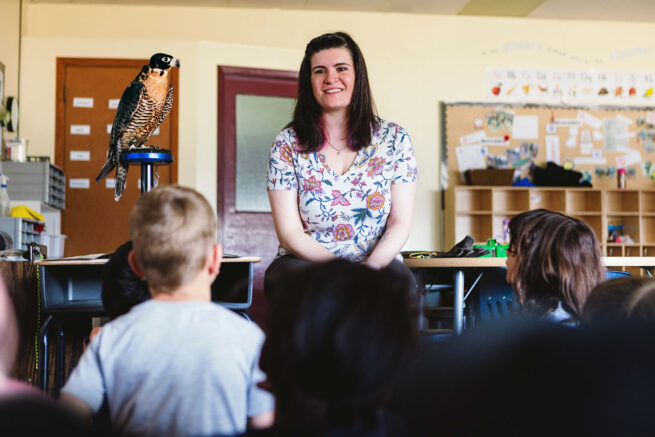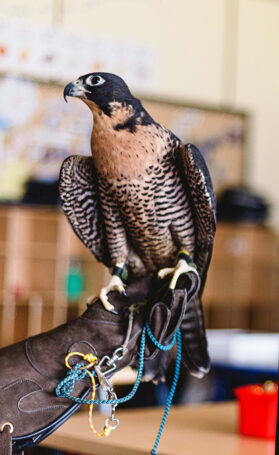August 9, 2023
Smart kids are birdsmart
Less than an hour’s drive east of Edmonton, the Beaverhill Bird Observatory is a wetland refuge, where more than 270 species of birds have been observed — more than 140 of which mate and nest in the area. As a result, birders and biologists flock to the area for research, conservation education and recreation.
Board Chair Geoff Holroyd helped found the observatory nearly 40 years ago, and has been spreading word of its feathered inhabitants ever since.
“We’ve always given talks to anyone that’s interested,” he laughs, explaining that typically, the field season at the observatory runs from May through November. During those months, staff and volunteers gather and share data as part of the Canadian Migration Monitoring Network.
About 10 years ago, Holroyd saw an opportunity to expand the observatory’s work to operate year round. He wanted to help younger generations understand the importance of conservation and respect for the environment.
In 2016, the BirdSmart winter education program officially launched. The program sees staff biologists head into classrooms across the province during the winter months to educate children about birds, conservation and the impact humans have on the environment.
“The hope is that children will take home messages on how they can be more environmentally responsible, and maybe convince their families to look at how they’re operating from the perspective of the environment,” says Holroyd.
What makes BirdSmart unique is the chance it offers kids to interact directly with a bird. The biologist leading the session brings one of the program’s bird ambassadors — which in the past have included a peregrine falcon and a kestrel — into the classroom.

“Conservation action is more real when children can see a real bird, rather than just a picture on the screen,” says Holroyd.
Like many in-person programs, BirdSmart faced challenges when the pandemic hit. No longer allowed to go into schools, and with education budgets facing major cuts, staff had to get creative.
“We had to go online, and our revenue dropped dramatically,” says Holroyd. “We had to totally pivot and buy the hardware, figure out the software and how to do the talks online to keep the kids educated, and keep our program going.”
The Edmonton Community Foundation (ECF) saw the difficulties environmental agencies were facing, and in response, launched its Environmental Operating Grants — a three-year pilot program to help grow and support Alberta’s environmental sector.
“What we had noticed through our other grant streams was that it seemed as though the pandemic hit environmental organizations particularly hard,” says Andrea Diamond, grants impact associate at ECF. “We saw that as an opportunity to provide them with additional support.”
The operating grants launched in 2021, and began offering multi- year funding to seven organizations. Beaverhill Bird Observatory received $40,000 for each of the first two years, and will receive $25,000 in year three.
“Providing multi-year funding — and having the organization know up front that it is multi-year funding — is incredibly useful for them. It helps them plan and be confident in knowing where they’re going to be,” says Diamond. So far, the results have been promising. The funds have helped the Observatory offer the BirdSmart program to educators at a discounted rate. With the reduced price, the program went from almost a fully open schedule to being fully booked, in a matter of weeks.
“The ECF grant was perfect in keeping that winter program going,” says Holroyd.
BirdSmart reached upwards of 10,000 students every year pre- COVID-19, which fell drastically during the pandemic. However, over the past couple of years, that number has started to multiply as the Observatory’s profile in the community has grown. Thanks to a partnership with the Edmonton Oil Kings and Edmonton Oilers, BirdSmart has been shared with thousands of hockey fans in Rogers Place.

Holroyd shared the story of when one young student went home and turned off lights in unoccupied rooms. When her mother asked why, the young girl said “we have to help save the owls!”.
“She may not understand all the implications of climate change but she knew the actions,” Holroyd says.
A lot of that growth has been made possible, Holroyd says, thanks to the operating grant and support from ECF.
“ECF has become a key partner in the Bird Observatory’s program,” he says. “We’re really appreciative of all the support they’ve given us.”
This story comes from the Summer 2023 edition of Legacy in Action.